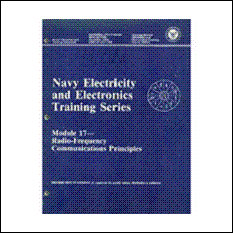Antenna Formulas and Resonance
BASIC ELECTRONICS ANTENNA FORMULAS
Basic electronics formulas are included to aid you in solving any electronics problem that you may encounter. These formulas are for antennas, resonance, transistors, vacuum tubes, wavelength, and radar. Additional formulas may be found in the appropriate NEETS module.
An antenna is a conductor or a group of conductors used
either for radiating electromagnetic energy into space or collecting it
from space or both. Antenna gain remains the same for the antenna
whether it is transmitting or receiving.
Antenna gain (G) can be described as the effectiveness of a directional antenna in a particular direction, compared to a standard or reference antenna. Some antenna formulas are shown below:


WARNING
Rf voltages may be induced in ungrounded metal objects such as wire guys, wire cables (hawsers), handrails, or ladders. You could receive a shock or rf burn if you come in contact with these objects. Obtain proper permission prior to going topside or "working aloft." Rf burns are usually deep, penetrating, and third degree. They must heal from the inside out. If you are burned, seek medical attention. A person in an RF field will usually have a body temperature rise. The eyes and reproductive organs are especially susceptible to RF energy.
Read and heed all warning signs! You can find more information about antennas in NEETS, Module 10, Introduction to Wave Propagation, Transmission Lines, and Antennas.
RESONANCE is a condition that exists in a circuit when inductance, capacitance, and the applied frequency are such that inductive reactance and capacitive reactance cancel each other. Formula for resonant frequency (fr).
NOTE: The formula for resonance is the same for series or parallel circuits when XL = X


















